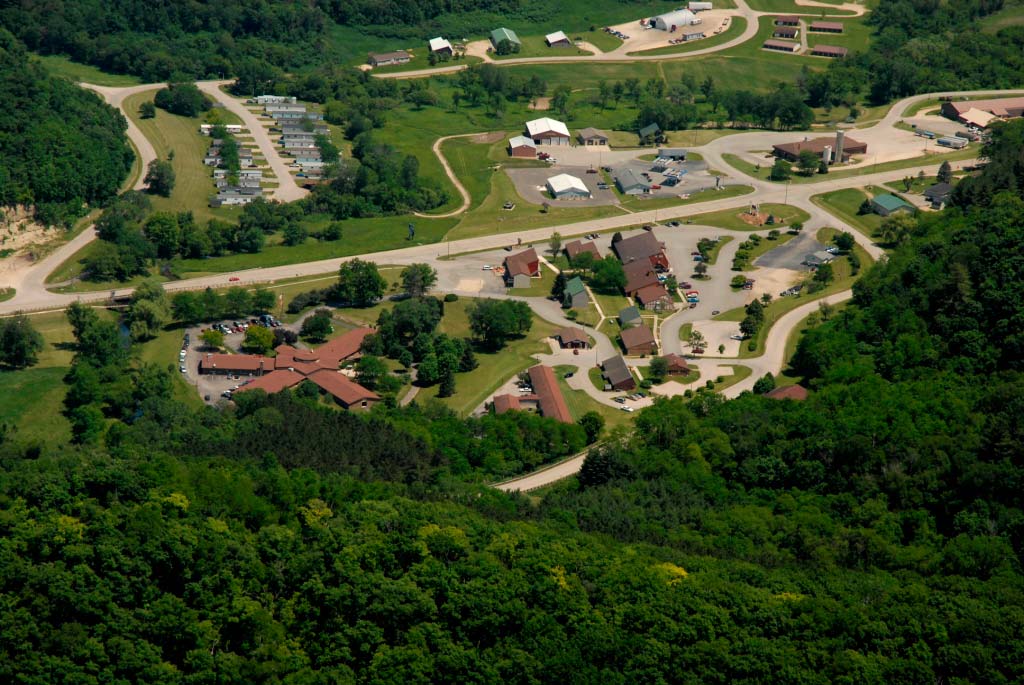The Solar Village
The relocation of the downtown started in 1979 and was completed in 1983. It not only moved the village business district out of the floodplain—it moved it back to U.S. Highway 61 and infused new economic life into the community. But the decision that was the most dramatic, made in response to the two energy crises that occurred in the 1970s, was the decision to make all the buildings in the new town center energy-efficient and solar-heated. The new Soldiers Grove business district would become the nation’s first “solar village.”
The village passed ordinances that stipulated that the new buildings be built to specific thermal performance standards twice as stringent as those require by state law at the time. A community-wide “solar access” law was passed, prohibiting any building from blocking another building’s sunlight. Another law required that all new commercial buildings would receive at least half their heating energy from the sun—the first such ordinance in the nation.
Soldiers Grove had no example to follow. Every step forged new territory. The new site was carefully analyzed to determine wind and sunfall patterns throughout the year. This helped businesses position their buildings to make the best use of summer breezes and solar heating. Earth berms and landscaping helped buffer buildings against winter winds. Every building material was scrutinized for performance, durability and economy, and its effect on the environment.
Over twenty solar buildings were erected: the medical center; the pharmacy; the community/library building; the fire station; the post office, the local bank; two apartment complexes; an office building; a storage building; two restaurants; the supermarket; and five privately-owned businesses.
The world continues to look toward Solar Town. The article “Soldier’s Grove Soldiers On,” which appeared in the November /December 2003 Solar Today magazine, took a detailed look at the village 25 years after it re-created itself. It discusses the valuable lessons learned from what worked and what didn’t, and draws positive conclusions:
“In some ways, the solar buildings of Soldiers Grove are like war veterans to be revered, respected and taken care of for the outstanding service they performed in the days of 15 percent inflation and oil price shocks. While some have fallen prey to old age, neglect and a government that promised a future but failed to deliver simple follow-up care, most of the buildings are still excellent examples of solar energy at work. The fact that they are still working is testimony to intestinal fortitude, good design and caring owners.
The [Department of Energy’s] Becker writes that ‘the yardstick for measuring whether a project is worthwhile is this: are the community and the world better off than they would have been if the project had not been accomplished?’ By Becker’s yardstick, the re-creation of Soldier’s Grove was, and is, a worthwhile project.”

 New Town
New Town